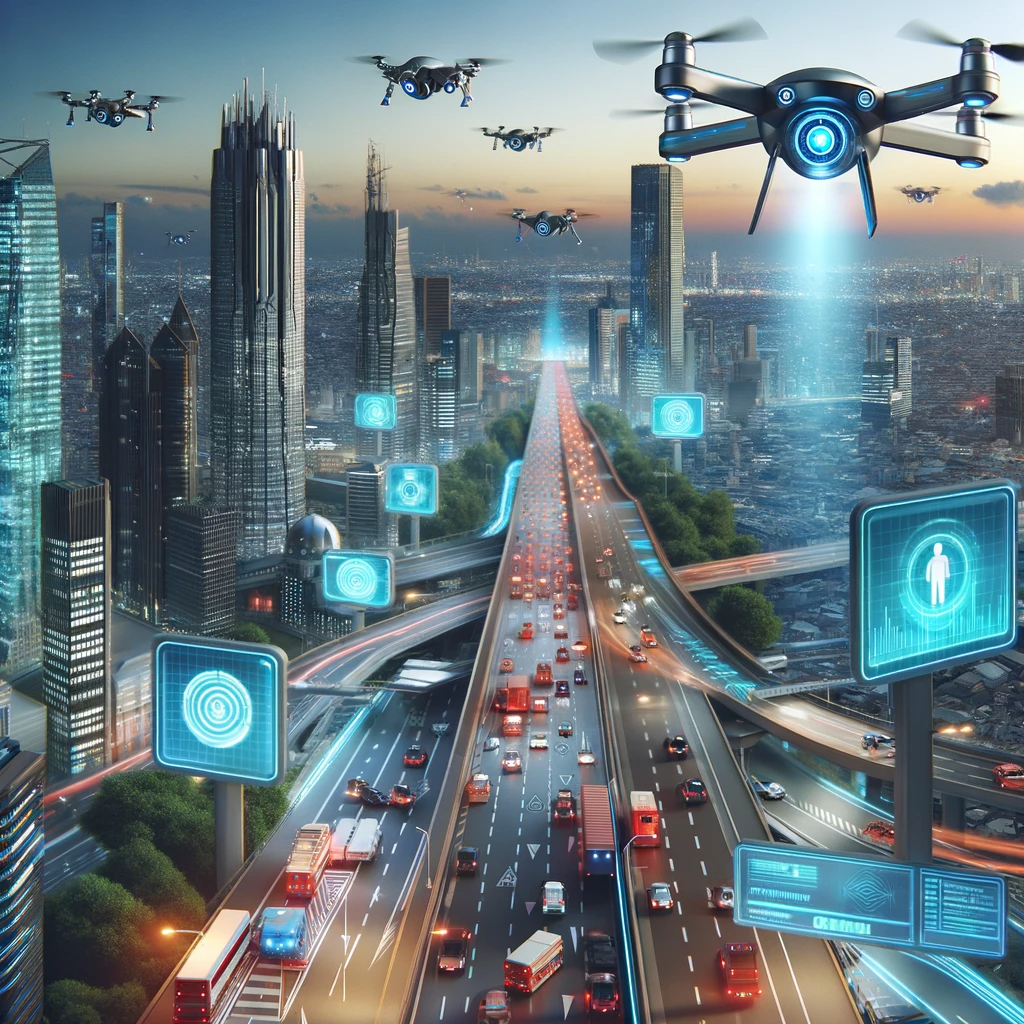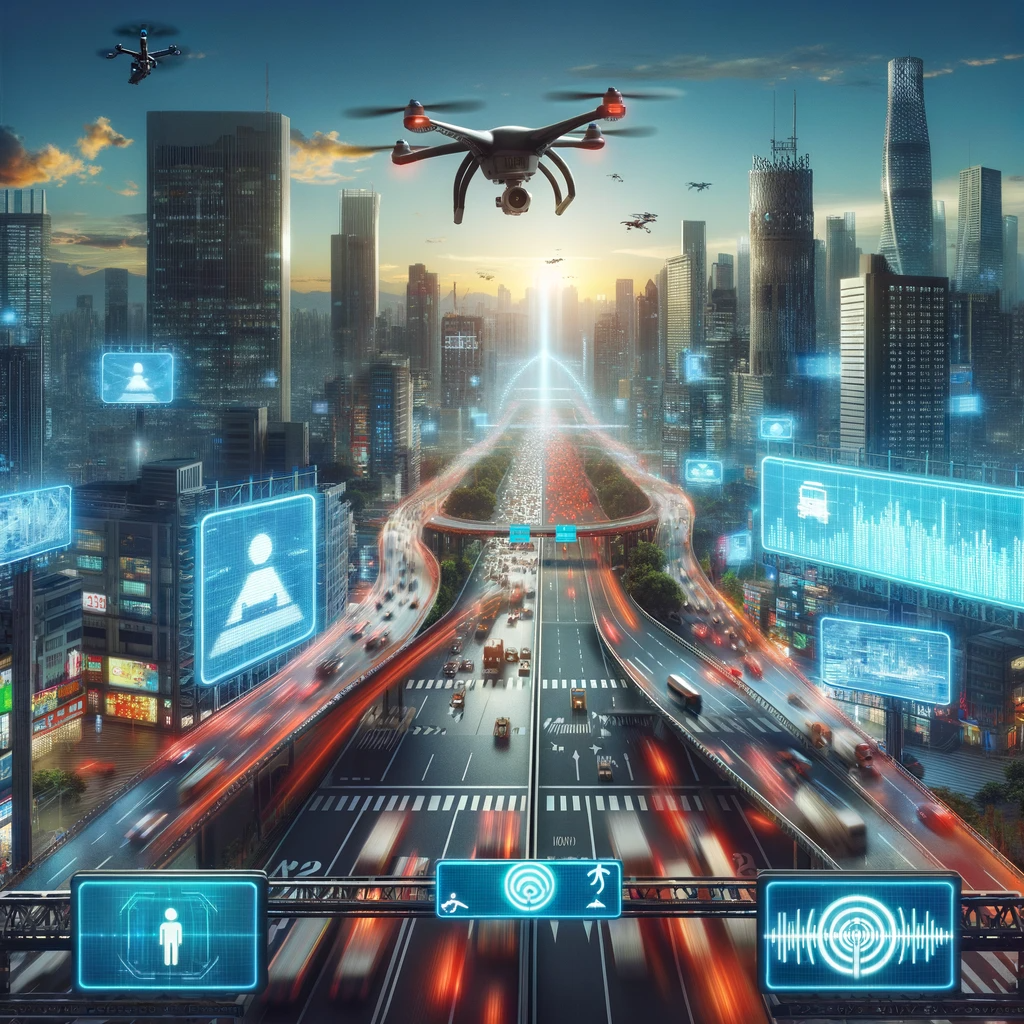In recent years, Artificial Intelligence (AI) has emerged as a transformative force across various sectors, reshaping the way we live and work. Its influence extends beyond the realms of business and technology, permeating critical aspects of public life, including public safety and emergency response. As communities worldwide grapple with complex safety challenges and the need for swift, effective emergency responses, AI stands at the forefront, offering innovative solutions that promise to revolutionize these domains.
This article delves into the multifaceted role of AI in enhancing public safety. From predictive analytics in crime prevention to optimizing emergency response mechanisms and refining public surveillance systems, AI’s potential to bolster safety measures is both vast and compelling. However, alongside these advancements, AI’s integration in public safety also raises important ethical and privacy concerns, necessitating a careful balance between technological innovation and the protection of individual rights. Through an investigative lens, this piece explores how AI can be a pivotal tool in safeguarding communities while highlighting the challenges and responsibilities that accompany its deployment in the public sphere.
AI in Crime Prediction and Prevention
Artificial Intelligence (AI) is dramatically reshaping the landscape of crime prediction and prevention, introducing a new era of predictive policing. By harnessing the power of AI, law enforcement agencies are now able to analyze vast datasets, uncovering hidden patterns and insights that human analysts might miss. This section delves into how AI algorithms process historical crime data, social media trends, and various other parameters to forecast potential criminal activities, thereby enabling a proactive approach to law enforcement.
Key aspects of this section include an exploration of predictive policing models that use AI. By examining specific case studies where such models have been implemented, the discussion will reveal their impact on reducing crime rates and enhancing police efficiency. However, this technological advancement is not without its challenges. The section will also critically analyze the ethical considerations surrounding predictive policing, addressing concerns about privacy infringements, potential biases in AI algorithms, and the implications for minority communities. This dual perspective provides a comprehensive overview of AI’s role in crime prediction and prevention, balancing its benefits with the need for ethical vigilance.

AI in Emergency Response Optimization
AI’s role in optimizing emergency response is a game-changer for crisis management. This section will explore the various AI tools and systems employed to manage emergency situations more effectively. From natural disasters to medical emergencies, AI technologies have the potential to drastically improve response times, decision-making accuracy, and resource allocation.
The focus here will be on the integration of AI in emergency dispatch systems, predictive analysis for disaster management, and resource optimization models. The discussion will include real-world examples and case studies where AI has significantly improved the outcomes of emergency responses, highlighting the tangible benefits of these technologies. Furthermore, the section will venture into the future of emergency response, exploring emerging AI technologies that promise even greater improvements in managing critical situations. This forward-looking perspective not only showcases the current state of AI in emergency management but also its potential to revolutionize this field in the coming years.
AI in Public Surveillance Systems
In this section, the spotlight is on AI’s integration into public surveillance systems. AI-enhanced surveillance technologies, such as facial recognition and behavior analysis algorithms, are increasingly being used for public safety monitoring, crowd management, and identifying potential threats. This segment will provide an overview of these technologies, examining how they function and the ways in which they are improving surveillance capabilities.
However, the deployment of AI in public surveillance raises significant ethical and privacy concerns. The discussion will delve into the delicate balance between enhancing public safety and preserving individual privacy rights. By presenting case studies of cities or countries where AI surveillance has been implemented, this section will showcase both the effectiveness of these systems and the challenges they present. The focus will also be on the ongoing debate about the potential for surveillance overreach and data misuse, emphasizing the need for responsible and ethical use of AI in public spaces.
Challenges and Future Prospects
The final section of the article addresses the challenges and future prospects of AI in public safety. While AI holds immense potential in enhancing safety measures, its implementation is fraught with technical, ethical, and legal challenges. This segment will explore these challenges in detail, discussing the technical hurdles like data accuracy and system reliability, as well as the ethical dilemmas and legal implications of using AI in public safety.
Moreover, this section will look ahead to the future, contemplating the advancements and innovations that may shape the role of AI in public safety. From emerging technologies to potential policy changes, the discussion will provide insights into how AI could evolve to better serve public safety needs while ensuring ethical compliance and risk mitigation. This forward-thinking perspective aims to provide a comprehensive understanding of where AI in public safety is headed, highlighting both the opportunities and the responsibilities that come with these technological advancements.

Conclusion:
The exploration of Artificial Intelligence’s role in enhancing public safety and emergency response reveals a landscape rich with potential yet fraught with complexities. As we have seen, AI offers groundbreaking opportunities in crime prediction, emergency management, and public surveillance, promising a future where public safety operations are more efficient, proactive, and responsive. However, this journey is not without its challenges.
The ethical considerations, privacy concerns, and potential biases associated with AI’s application in public safety demand careful consideration. It is imperative that as we advance technologically, we also fortify the frameworks of responsibility, ethics, and transparency within which these AI systems operate. Balancing the benefits of AI in public safety with the rights and freedoms of individuals remains a pivotal aspect of this technological evolution.
Looking ahead, the future of AI in public safety and emergency response seems poised for further innovation and growth. As AI technologies continue to evolve, their potential to transform these critical areas of public life becomes increasingly pronounced. However, it is crucial that this progress is guided by a commitment to ethical standards, legal compliance, and an unwavering focus on the welfare of the community.
In conclusion, while AI undoubtedly has the potential to revolutionize public safety and emergency response, its successful integration hinges on our ability to address the accompanying challenges with diligence and foresight. By striking a balance between innovation and ethical responsibility, we can harness the power of AI to create safer, more secure communities while upholding the values of a just and equitable society.
